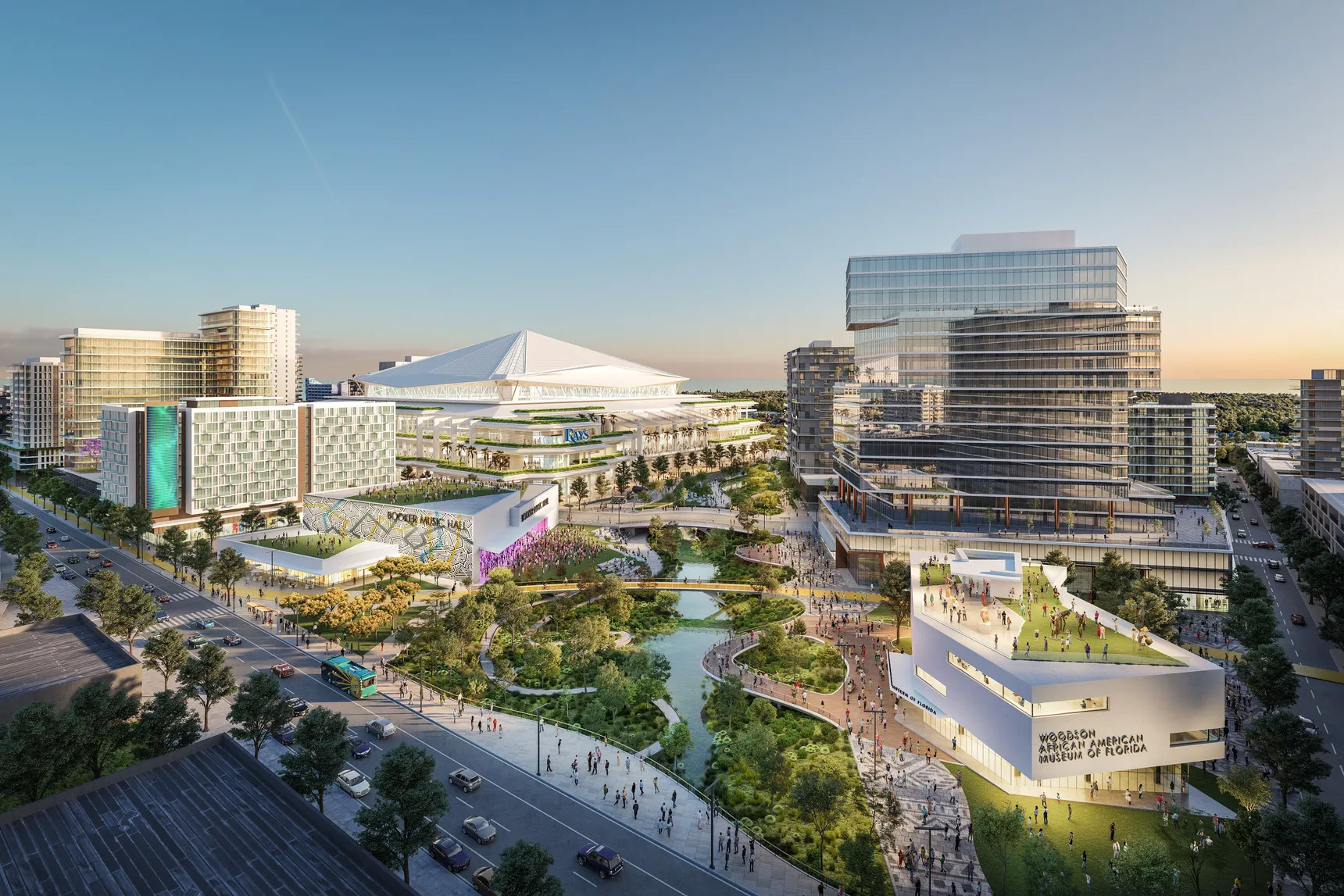Mayor Ken Welch’s newly-announced developer pick continues local debate over the fate of Tropicana Field.
Courtesy of Hines and Tampa Bay Rays
By Alisha Durosier
As the Tampa Bay Rays’ 2027 lease expiration looms, Mayor Ken Welch has announced his pick for the redevelopment of the 86-acre Tropicana Field and Gas plant district.
After discontinuing the plans of the two previous developers last summer, the mayor selected Hines as the best fit to redevelop the St. Petersburg baseball stadium. Welch chose Hines out of four new proposals submitted for review by 50 Plus 1 Sports, Hines and the Tampa Bay Rays, Restoration Associates and Sugar Hill Community Partners.
Welch requested that the submitted proposals not only feature a remodel of the 17.3 acres occupied by the stadium, but also incorporate attainable and affordable housing, open space, office space, and business opportunities. Welch also requested the proposals include a tribute to former residents of the Gas Plant District, a community that was displaced as a result of the construction of Tropicana Field.
The mayor announced his pick during his State of the City address on Jan. 30.
The Hines-Rays’ plan proposes that 23% of the housing units built will be affordable. Surrounding the stadium will be an event plaza featuring walkable streets, vendors and family-friendly entertainment offering residents and game attendees a Game Day Street Experience. The proposal also incorporates activated outdoor space, with plans to restore Booker Creek –– adding walkways and a recreational Pavilion along the creek. Called the Booker Creek Greenway, it will connect the residential units and stadium to the proposed Cultural Arts Promenade.

The Promenade is space allocated for cultural activities. It will include the Booker Music Hall which will seat between 2,500 and 3,000 attendees, along with the Woodson African American Museum which is to be relocated from its location in Jordan park.
The intention behind the cultural Promenade is to honor the community of the Historic Gas Plant District.
Before the establishment of Tropicana Field, the Gas Plant District, a predominantly Black community formed Between 1890 – 1900, thrived. In 1986, eight years after being selected for redevelopment, the gas plant area was selected to house what is now known as Tropicana Field in hopes of attaining a major league baseball team. The plan displaced over 800 Black residents as the city began to acquire residential areas, local businesses, churches and cemeteries.
A portion of Tropicana Field’s parking lot rests on the Oaklawn Cemetery which operated from 1905 to 1926. The lot is currently being surveyed by the African American Burial Grounds and Remembering Project, with plans of building a memorial for the burials that were not relocated.
Hines and Tampa Bay Rays’ have yet to commit to their plans for the 86-acres, as the team hasn’t confirmed whether their home will remain in downtown St. Petersburg or in Tampa’s Ybor Harbor.
Negotiations regarding the redevelopment including its funding sources will begin later this year.



